Rodney, Mississippi | The Ghost Town You’ve Probably Never Heard Of
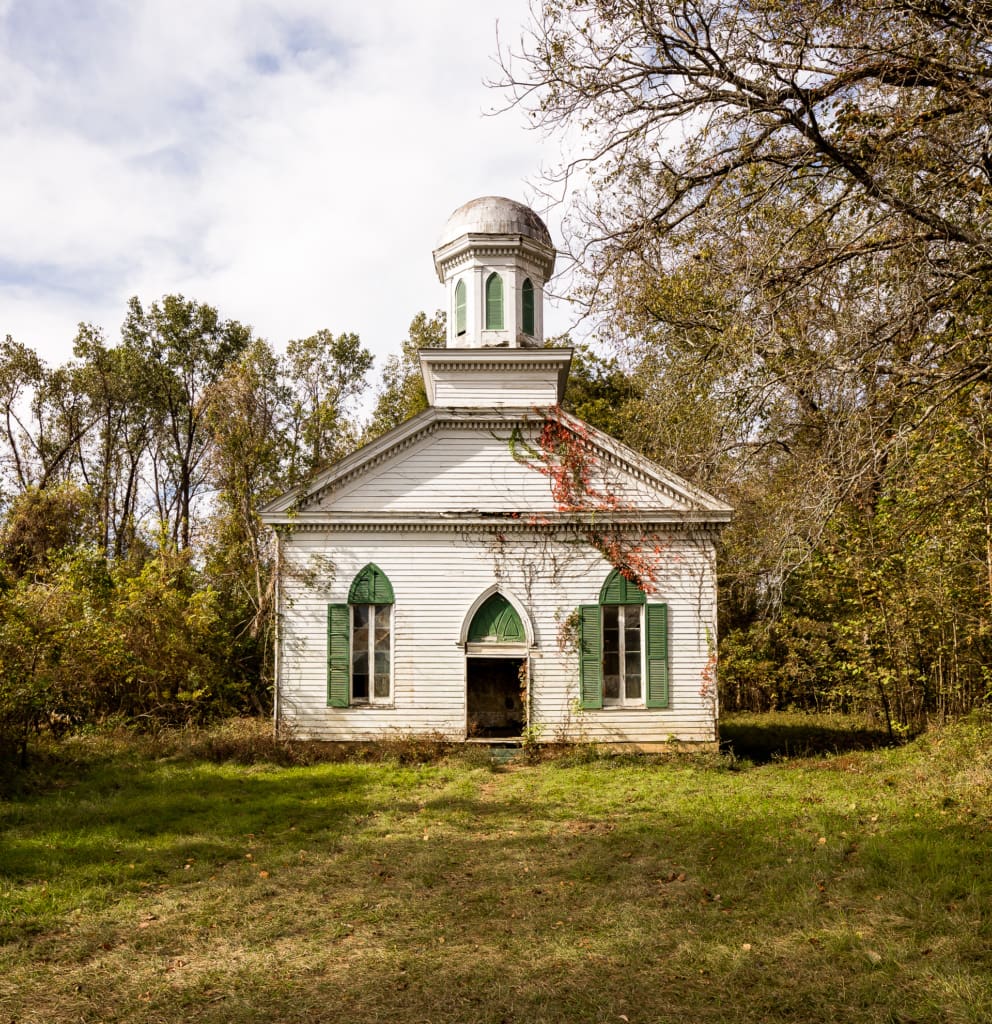
Well, I know I had never heard of it before. When I began this side-project/mission to document historical and haunted architecture, Rodney, Mississippi was not on my list. Researching the areas along the Vicksburg-Natchez corridor I was amazed at the sheer amount of great history and architecture located through there. That’s when Rodney popped up. About 10 seconds into that reading, I knew that this was a place I had to go.
My 9 year old son (at the time) and I visited Rodney in November of 2017 on a trip that carried us from the fabled “Devil’s Crossroads” in Clarksdale (or Rosedale, depending on which story you believe) where Robert Johnson sold his soul to the devil for musical genius, to Vicksburg to Natchez. It was an amazing trip and all the stories are, or will be, chronicled on this site.
The History of Rodney, Mississippi
Rodney was a city in Jefferson County about 32 miles North of Natchez along the Mississippi River. Originally settled by the French in 1763, Rodney’s original name was Petit Gouffre, meaning “little gulf.” After the French-Indian War, the area was taken by the British, only to be relinquished to the Spanish in 1781. Spain eventually sold the land to Thomas Calvit in 1798.
In 1828, the city was incorporated and officially named Rodney after Judge Thomas Rodney (1744-1811 – a Thomas Jefferson appointed judge of the Mississippi Territory). Thomas Rodney’s oldest brother, Caesar, was a leader in Delaware politics and signer of the Declaration of Independence while the Judge’s son, also named Caesar, was Thomas Jefferson’s Attorney General.
Judge Rodney’s claim to fame stems from the fact that he was one of two judges that presided over the Aaron Burr trial for Conspiracy against the United States. Burr was eventually acquitted of these charges, but let’s just say that Burr was not a fan of Judge Rodney.
The vindictive temper and unprincipled conduct of Judge Rodney have induced me to withdraw for the present from public view.
– Aaron Burr
The town of Rodney grew very well and, at one time, could be mentioned in the same breath as Vicksburg and Natchez. Rodney was so prosperous as a river port that, prior to becoming incorporated, it nearly became capital of the Mississippi Territory, losing to the nearby town of Washington by only three votes.
The first church in Rodney was built in 1832 and the two-story Federal Architecture style Presbyterian Church still stands today. The church bell, that is still occasionally heard by visitors to Rodney, is said to have been partially cast with 1,000 silver dollars donated by the church members.
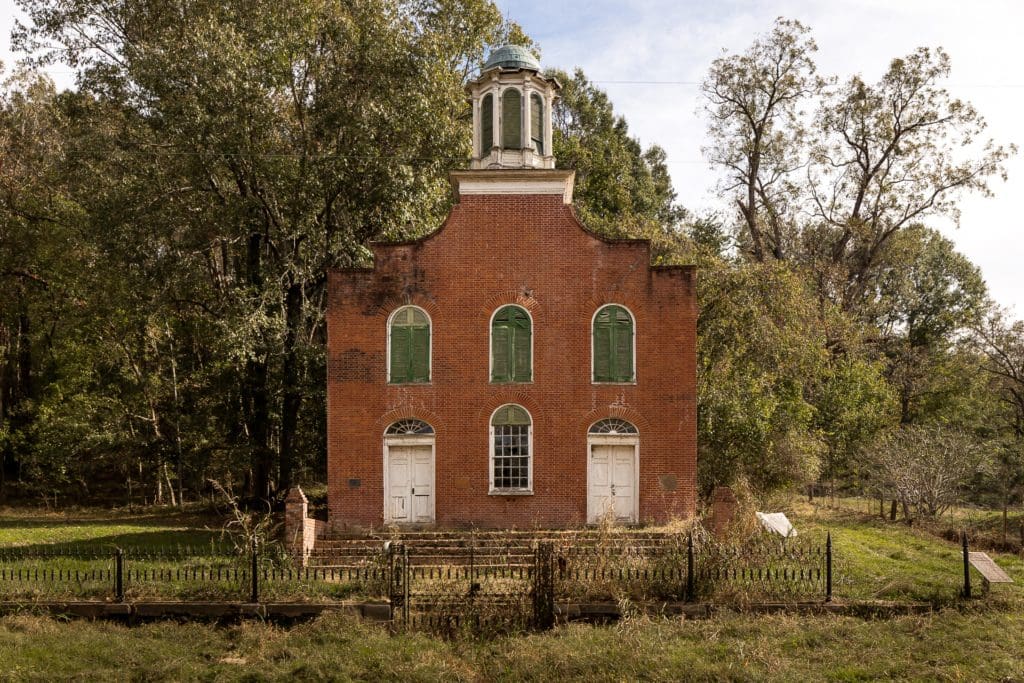
Rodney was host to many notable visitors including Andrew Jackson, Henry Clay and Zachary Taylor. Taylor was so taken with the area that he purchased the nearby Cypress Grove Plantation in 1842. Shortly thereafter, Taylor’s daughter, Sarah, eloped with Lt. Jefferson Davis, future President of the Confederate States of America.
While Rodney entertained American Presidents and other political figures, one of its own citizens made a name for himself. Dr. Rushworth “Rush” Nutt improved and perfected Eli Whitney’s crude cotton gin by connecting it to steam power and adding flumes to sort the dirt from staples. Nutt also popularized contour plowing to prevent hillside erosion, and developed a new strain of cotton that was more resilient and immune to rot. These advances skyrocketed the profitability of growing cotton.
Dr. Nutt’s son, Haller Nutt, would later build, though never finish, the architecturally stunning (and haunted) Longwood Mansion in Natchez.
Yellow Fever Outbreak
The year 1843 marked the first real tragedy of Rodney’s history. A severe epidemic of yellow fever hit the town. Caused by the official insect of the South, the mosquito, Yellow Fever is a viral infection that gets its name from the yellowish hue the eyes and skin develop as a result of the infection. During the 1800’s, yellow fever was fatal to more than half of the people that developed the disease. Symptoms included hemorrhaging, vomiting, and severe pain before death finally crept in and provided a merciful release from such.
The epidemic was so bad in Rodney that national newspapers were covering the story and every doctor in the town fell ill of the disease. Every business was closed and the town was almost completely depopulated. The fact that the town survived and even proceeded to thrive is amazing in its own right.
The second church built in Rodney was the Mt. Zion No. 1 Baptist Church, more commonly referred to as the First Baptist Church. In 1850, the Greek/Gothic Revival church was put into service and, like the Presbyterian Church, still stands today. A couple of restoration attempts have been made, but failed over time. Rodney has a propensity to flood now, and several of them have taken their toll on the building.
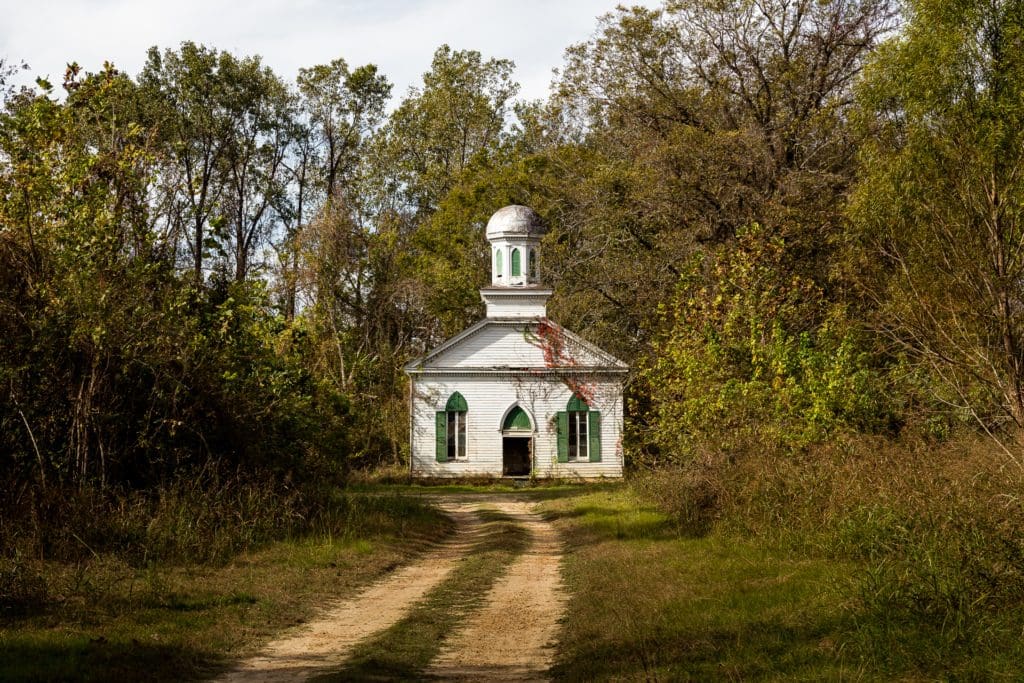
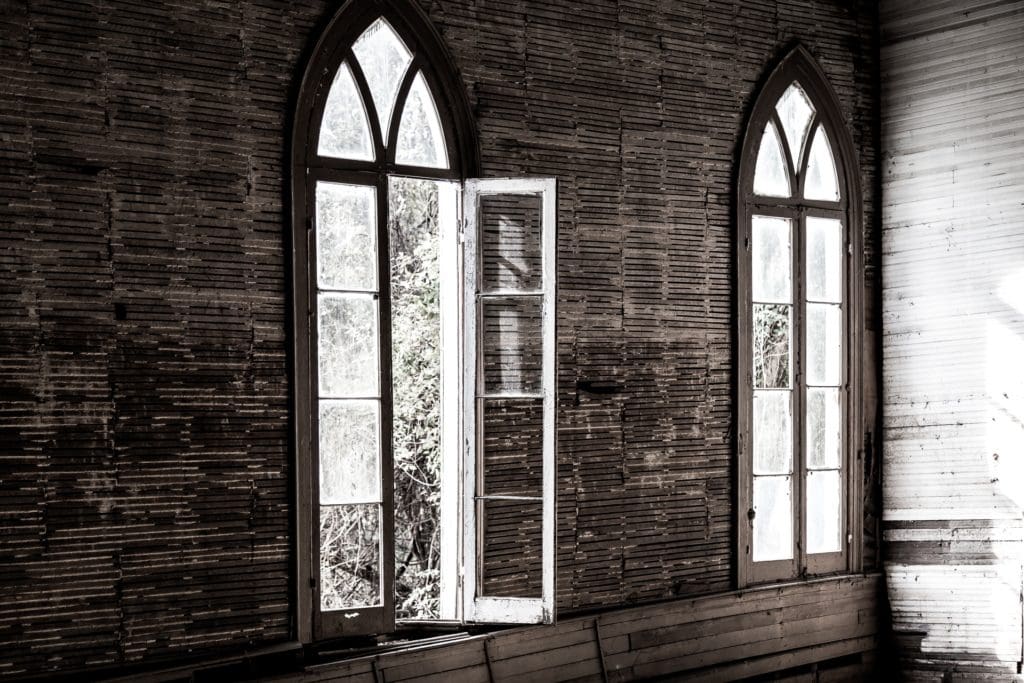
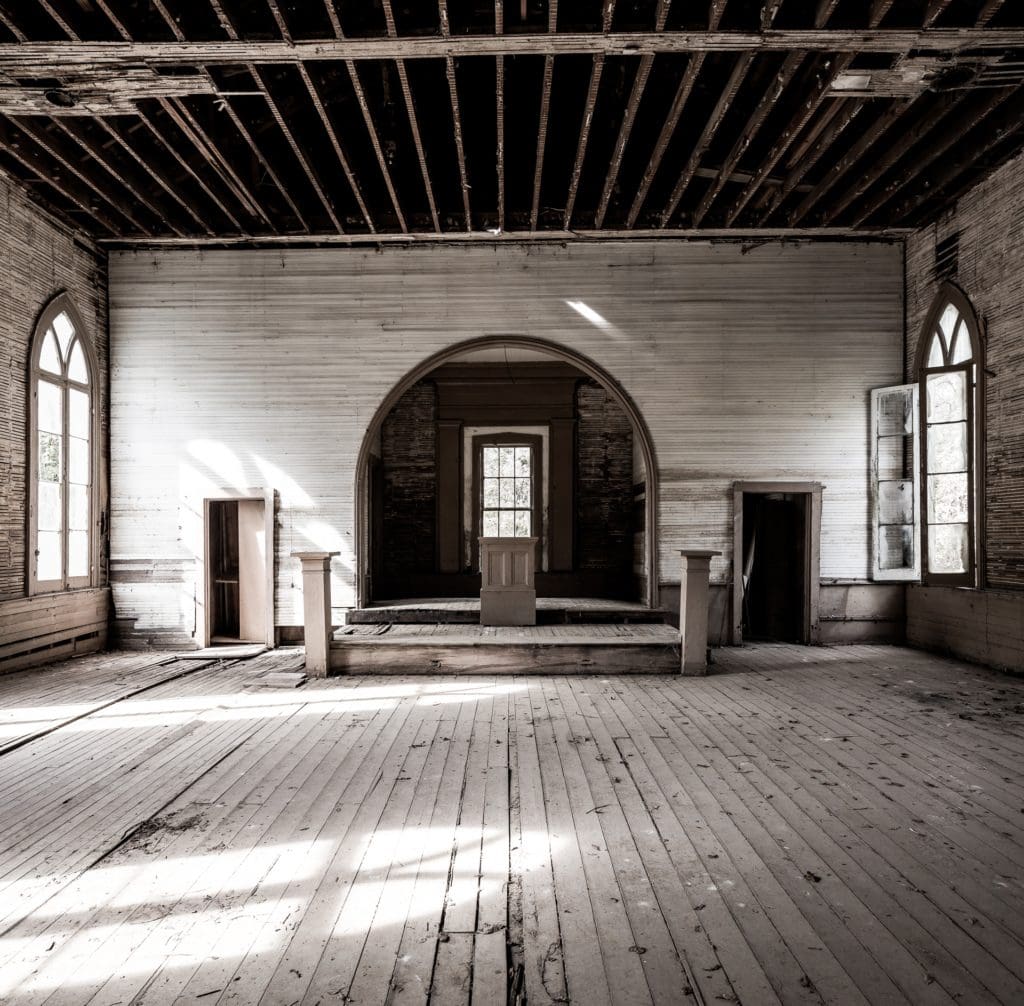
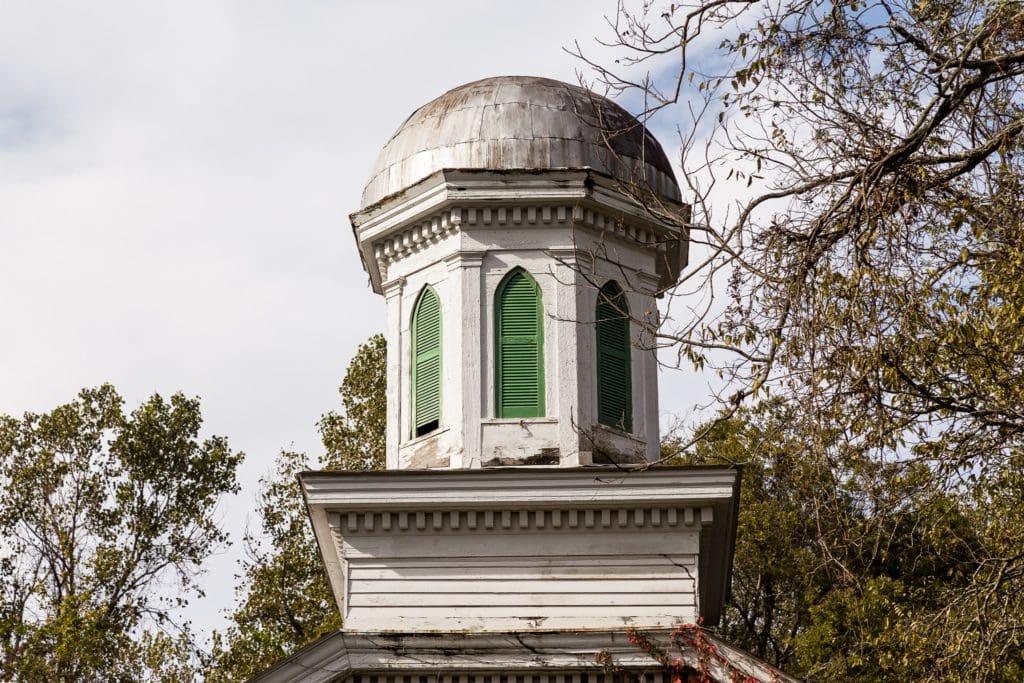
By the 1850’s Rodney had become one of, if not “the”, busiest ports on the Mississippi between St. Louis and New Orleans. At its peak in the early 1860’s, Rodney was home to nearly 5,000 people, several banks, at least 35 stores, hotels, several saloons, and the state’s first opera house with shows only seen in the likes of New York and Philadelphia.
Civil War, the Presbyterian Church and the Rattler
In 1861, Civil War broke out and eventually became the catalyst for Rodney’s untimely demise. Following the fall of Vicksburg, the Confederacy was split in two and the Union controlled the entirety of the Mississippi. While the town survived the war in tact for the most part, several Union raids and plundering expeditions through the town separated her from her wealth.
Enter the most famous story from Rodney; the USS Rattler. The Rattler was stationed at the port in Rodney and Reverend Baker, a Union sympathizer and guest upon the Rattler, had been invited to preach at the Presbyterian Church. On September 13, 1863, Baker invited Captain Walter Fentress and the Federals on board the Rattler to attend church services with him. Though Admiral Porter had previously given orders for no one to leave the ship, Fentress and some members of the crew were restless and accepted the invitation.
That Sunday morning, Captain Fentress and a group of his men arrived at the church for services. The men came in good faith and were unarmed, save a hidden revolver stowed away on Union officer A. M. Smith’s body.
Nearby Confederate Calvary caught word that the blue coats were at the church and quickly rode off to seize the opportunity. Once arrived, Calvary surrounded the church and Confederate Lt. Allen made his way in to, um, “suggest” that the Union crew surrender.
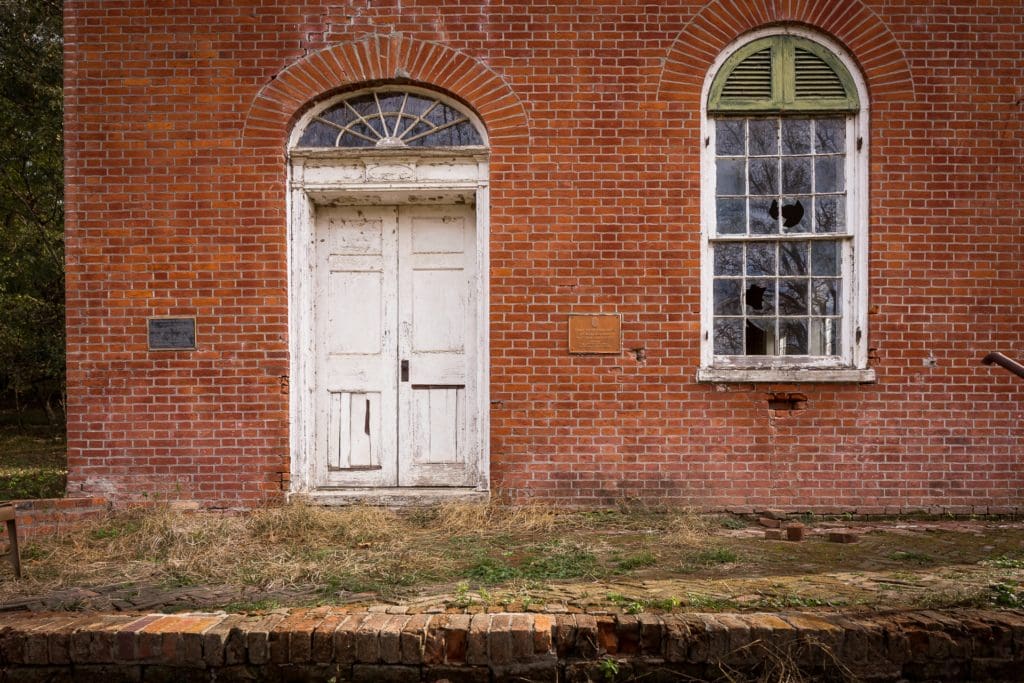
Not to go without a fight, Federal A. M. Smith drew his pistol and fired on the Confederates. A gun battle erupted and a few soldiers escaped to the Rattler in the confusion. The Rattler began shelling the town, hitting the Presbyterian Church and lodging a cannonball in the brick for years to come.
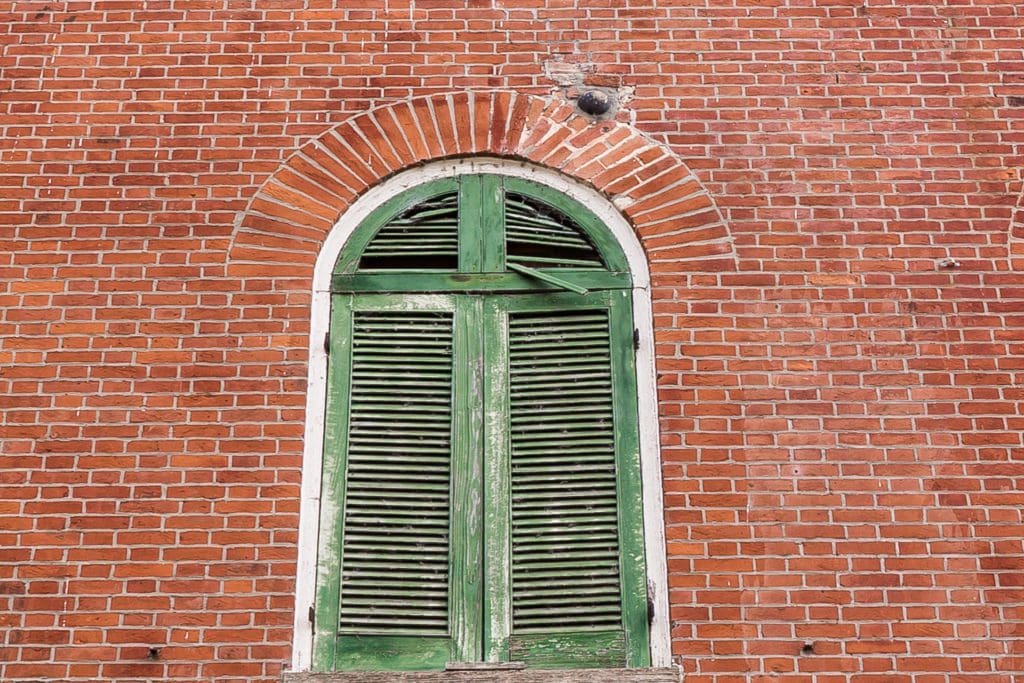
Captain Fentress, 3 officers, and 20 men, unarmed, with the exception of one officer, were on shore at church when the rebels dashed into the town and surrounded the house, capturing the whole party, with the exception of 2 officers and 5 men, who made their escape. One of the officers fired his revolver four times at the rebels, and thinks he wounded two.
– Union Lt. Commander James Greer to Admiral Porter on September 14
From an article published in 1910, The Rattler Encounter as witnessed by Elijah Conklin:
I thought as I was in the church that day, and had the experience of having both a Federal and Confederate officer level their pistols on me within two or three minutes time, that perhaps my experience might also be interesting to the readers of the Chronicle.
The Federal captain was seated immediately in front of me. The pew he was sitting in was entirely taken up by himself and sailors. A Federal officer who had accompanied a lady of the town to church was seated on the opposite side of the church from the captain. He was the only one of the party that was armed, he having a navy revolver. Soon after the services commenced, we were startled by noises on the outside of the church, such as running of horses in the street and a rattling noise which we afterwards found out was caused by the Confederate cavalrymen’s spurs rattling on the brick walk in front of the church.
We could not imagine the cause of the noises, but everybody seemed to have a premonition of something dreadful going to happen. Before we had time to take in the situation, a Confederate officer ran in the church from the left entrance. He had a revolver in each hand, and with them pointed toward the Federals, said, in a loud tone, with an oath, ‘Surrender, you are my prisoners.’ The Federal captain quickly arose to a standing position with uplifted hands, facing the Confederate, said, ‘We surrender, for God’s sake don’t fire among the women and children.’
At that instant the Federal officer from the opposite side of the church fired at the Confederate, who immediately fired at the Federal and then such excitement and confusion never witnessed before or since. Women and children were screaming, men, women and children were rushing in every direction endeavoring to get out of the church, some jumping out of windows, others rushing out of the doors. Back in the choir looked to me to be the safest place, and in my excitement I climbed over the top of the pews to get there.
We could hear the Confederates on the outside of the church shooting and calling on the sailors to surrender, and occasionally heard a shot fired from the inside of the church by the Federal officer. Presently he came running down the side of the church and into the corridor and stopped in the door-way leading into the choir and covered me with his pistol. I had met this officer on the street a few days before and had a heated argument with him, and when he pointed his cocked pistol at me I thought his intention was to kill me. I threw up both my hands as quickly as possible and said, ‘For God’s sake don’t shoot me.’ He replied, ‘Then take those men away from here.’ I answered, ‘That is not in my power; I have no control over them.’ He then left me and I went farther in the church. One of the Confederates ran in the left entrance and leveled his revolver in the direction of the choir, but instead of covering the Federal with it as he expected, it covered me. I thought in his excitement he would surely shoot me, Instantly up went both of my hands and again I cried out, ‘For God’s sake don’t shoot me.’ He said, ‘Where did that Yankee go?’ I answered, ‘I don’t know.’
The Confederate went outside without searching the church for the Federal. We learned afterwards that when the Federal left me he hid under a pew and remained there until the Confederates left and then made his way to the river bank and gave a signal to the gunboat which was anchored in front of the town, and a yawl was sent ashore and he and a sailor who had escaped capture were taken aboard of the gunboat.
After my experience with the Confederate officer I realized that instead of getting, as I supposed, in the safest place in the church, I had got into the most dangerous, and I followed the Confederate officer out of the church and found most of the people who had been in the church congregated in front of it. Just at that time the squad of Confederates, mounted on their horses, passed in front of the church with the Federal captain and eighteen sailors with them as their prisoners. One of the Confederates, a mere boy as he appeared to me to be, waved his hat and said, ‘Three cheers for the Southern Confederacy,’ and addressing the crowd of citizens, said, ‘You must excuse us for disturbing your church services, but it was too good an opportunity to pick these men up.’
The Confederates left town and we Rodneyites hastened to our homes and hurriedly tied in sheets some provisions and clothing, ready to throw the bundles over shoulders and run from the town in case the Federals burnt it, which they usually did when they were fired on from towns. When the Federal officer and sailor who had escaped capture reached the gunboat and informed those on the boat what had occurred, the gunboat raised her anchor and steamed up and down in front of the town, firing broadside after broadside of shells into the town. Several houses were struck by the cannon balls, one entering the church; finally the cannonading ceased.
After the Confederates left town, they sent a written communication to the gunboat, stating that the citizens should not be held responsible for what had occurred, for the citizens did not know of their being in that vicinity or their intentions, and if the Federals burnt the town they would hang the prisoners they had captured. The communication was given to one of the old men of the town who immediately consulted other citizens and they decided it would be poor policy to send the communication to the Federals for they might capture nineteen citizens, burn the town and say to the Confederates, ‘Now hang our men and we will hang these citizens.’ So the communication was destroyed instead of being sent to the commanding officer of the gunboat.
In an hour or two after the cannonading stopped it commenced again. We soon discovered they were shelling the roads leading into the town and were landing a force of sailors who marched up town and set fire to the hotel. Rev. Mr. Price, came running down the street; he was bareheaded and in his shirt sleeves, and asked one of the sailors for their commanding officer; when he was pointed out to him he told him of the communication the Confederates had sent in and why it had not been delivered, and as they had commenced burning the town he thought it best to inform him of it. The Federal officer said he had orders to only burn the hotel; that the Confederates threats would not influence him to put the fire out, but he would call his men off and if the citizens could put the fire out they might do so. As the fire had hardly got started the citizens did not find it difficult to stop it. The Federals returned to the boat and we were told they would not disturb the town any more until the matter had been reported to the general in command at Natchez. He, I suppose, decided not to take any action, for we were not molested again.
– Elijah Conklin, CSA Veteran that served until the end of the war before surrendering under General Nathan Bedford Forrest at Gainesville, AL.
The Downfall of Rodney
The fire started by the Federal officer in Mr. Conklin’s account may have been put out by the citizens of Rodney, but no one could stop the series of events that were about to unfold. Shortly after the Civil War, a sand bar developed in the river channel and the Mighty Mississippi shifted its course 2 miles West, leaving the town without a river port. Some attempts were made to “follow” the river, but they failed in dramatic fashion.
In 1869, an even greater fire than the one caused by Federals engulfed a large portion of the town. An officer aboard the steamer Richmond witnessed the fire.
Wednesday night, shortly after we left Vicksburg, a bright light was observed in the southern horizon. All manner of speculation was rife on board concerning the cause and as the light grew nearer and nearer the interest grew in proportion. At last after several hours of eager watching we bore in sight of the beautiful Town of Rodney and lo, we beheld it the object of the wrath of the fire king. The whole village was wrapped in a mantle of flames and as at two o’clock in the morning our boat glided swiftly down along the other shore, the scene was grand beyond description, lit up as it was by the lurid lights from burning buildings, mingled with the moon’s pale beams.
The death knell to Rodney was delivered by the railroad. In the early 1880’s, instead of going through Rodney, the Jackson and Columbus Railroad bypassed the town in favor of Fayette, MS. Rodney Road, even now a mostly dirt and gravel road, has since remained the solitary point of access to the town.
The people that had fought so hard to keep the town together through bouts of Yellow Fever, the Civil War, the fire of 1869 and the Mississippi’s course change finally conceded defeat. They gave up on the town and began to leave in search of better opportunity.
In 1930, Governor Theodore Bilbo metaphorically engraved Rodney’s tombstone. 1828-1930. At 102 years old, by Executive Proclamation, Bilbo officially removed Rodney’s status as a town. As of 2017, there are only 13 residents of what used to be Rodney, Mississippi, and nine of those are related to each other.
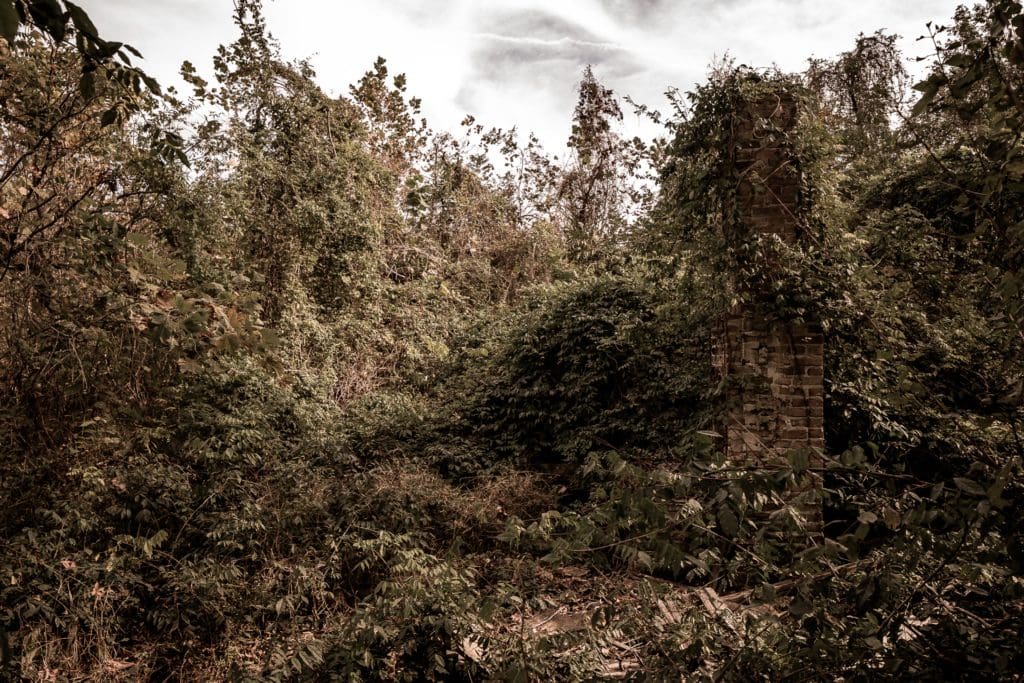
The Hauntings
If a haunting happens in a ghost town, would you ever know? That’s the problem with Rodney. The small town has had more than its fair share of death and destruction, but there’s no one left to experience the paranormal. Due to that, published stories of hauntings in the town are very few and far between. As a matter of fact, I was only able to find the following few. It appears that most stories are that of local legend and haven’t really made their way to the Internet or Library.
“Mountain” Tom Clark was a outlaw gang leader that terrorized citizens during the Civil War. He famously boasted, “no one will ever run over Tom Clark!” In 1872, Clark was captured and subsequently confessed to 19 murders, including that of a child. He was promptly hanged with two of his associates. Although graves had already been dug in a nearby field, the townspeople were so outraged that they interred Clark beneath Tennessee Street where he would be “run over” by everyone that passes. His spirit has been seen pacing the street above his grave on numerous occasions.
Years ago, there was a bit of a tradition with the local high school. When school started, the new Freshmen were invited by the outgoing Seniors to have a little fun in the middle of the night at Rodney. Think of it as a rite of passage. The night would usually turn unforgettable for the Freshmen as they experienced the sounds of gunshots and cannon fire, church bells ringing, flashing lights, cold spots and ghostly apparitions. Most would never return. Few would go on and pass the tradition to the next round of Freshman 3 years later.
In 1890, one local was captured by an angry mob in the town. I’m not sure what he did, but it must have been pretty bad. Forgoing due process and trial, the mob captured the man and he was hanged from a tree in the jailhouse yard. His corpse was then buried in the Rodney Cemetery. His spirit is known to make appearances in the graveyard and walk the town at night.
In 1909, another local was floating some logs in the swampy area nearby. He fell through and drowned before anyone could help him. Many people have been through there and seen a man with outstretched arms, as if begging for help, slowly sinking below the surface until he disappears.
